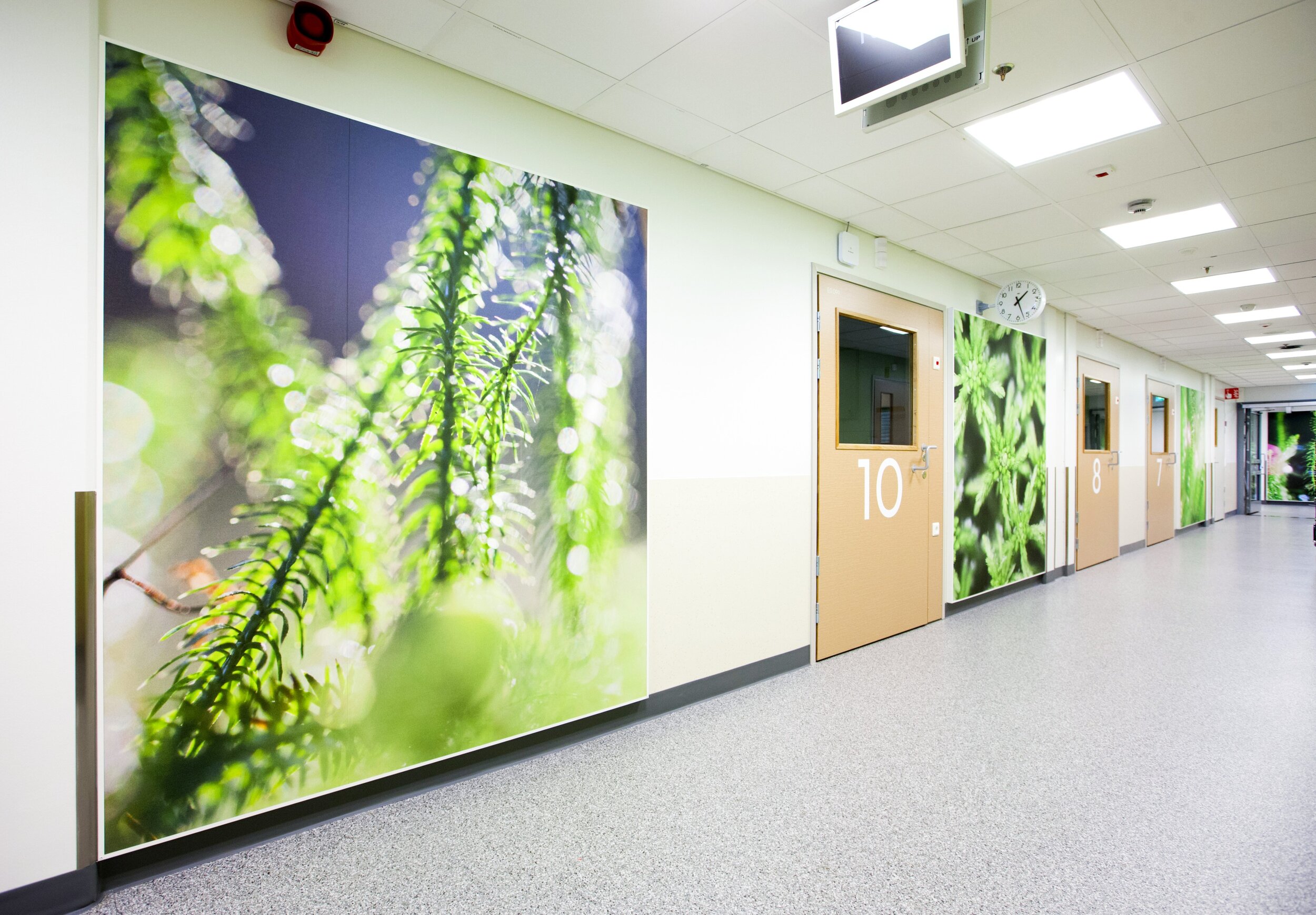Sound may not be one of the first things we think of in biophilic design but what most people want from the auditory environment is intrinsically linked to nature.
Our hearing is often key in our perception of the world around us; it helps us to interact, communicate and be aware of what is happening and impending change. It is designed for the outside, a world without walls and other hard reflective surfaces that focus sound and allow it to build up to levels where it affects our concentration, increases levels of anxiety, negatively affects performance and interrupts our sleep.
Further associations with the natural world are found in our sound preferences. Subjectively many people prefer outdoor sounds, for example the soft sounds of water babbling, leaves rustling and birdsong. However, much of our time is now spent inside and for patients in hospital their stay is often a continuous indoor environment with unnaturally high levels of artificial noise from which there is no escape, not even in sleep, and which are out of our control.
Satakunta Children's and Women's Hospital using Ecophon Printed panels to improve acoustics
There are many sources of noise in hospitals broadly split into three categories, technology (phones, monitors, alarms), verbal communication and logistics (moving people and items). The sterile environment includes many acoustically hard finishes designed to be hard-wearing and easy-to-clean these reflect sound and increase the background noise level and reverberation (echo) within a space. This can prove challenging for both staff and patients.
Workplace noise leads to an increase in levels of stress and a reduction in concentration. Medical staff spend much of their time communicating. This contributes to the high noise levels and emphasises the importance of providing a good sound environment to avoid mistakes and misunderstanding. In addition, a nurse working on a hospital ward with a high level of background noise has to constantly raise their voice to be heard clearly, and this has a longterm effect on voice strain and increases levels of stress. Studies have shown that in good room acoustic conditions with low background noise levels and low reverberation times staff feel less stressed, feel they have more autonomy over their work and more time to spend with their patients; increasing levels of job satisfaction.
People in hospital include many from groups that have additional requirements from the sound environment; including older patients, those with hearing loss, young children, and people with dementia. From a patient perspective a study at Huddinge hospital coronary critical care unit studied the effect of improving the acoustic conditions on care and recovery. In this intervention study in good room acoustic conditions the patients sleep was improved, they were less stressed, had a reduced length of stay and rates of rehospitalisation were significantly lower. Patients felt they had a better relationship with nursing staff and the overall quality of care was graded higher.
A good room acoustic environment is important for everyone; however for people in hospital, both staff and patients, this can have a huge impact on their wellbeing.
Andrea Harman, concept developer specialising in acoustics for healthcare for Saint-Gobain Ecophon.
For more information on Andrea and Ecophon, see her profile on the website https://www.ecophon.com/en/knowledge/meet-the-experts/andrea-harman/
Andrea’s podcast with us is now live, please do have a listen. https://www.argentawellness.com/journal-of-biophilic-design/sound-without-wallsnbsp-considering-room-acoustics-in-hospitals-as-an-integral-aspect-of-biophilic-design
If you are interested in commissioning printed panels for your hospital, workplace or other environment to help improve the acoustics and wellbeing of your staff, families and patients, do feel free to call us on 07747 025361 or look at our print gallery where you can buy printed panels direct which combine biophilic nature imagery with the Ecophon panels.



